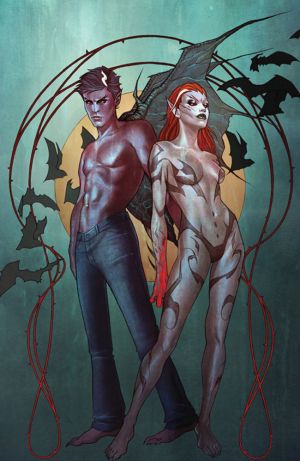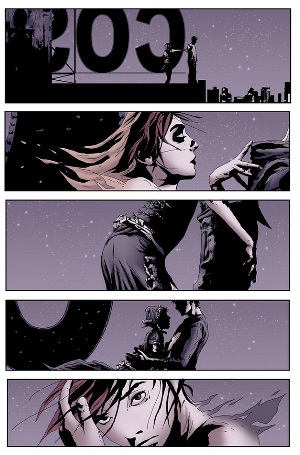Comics /
Comic Reviews /
DC Comics
I, Vampire #1
By Andy Frisk
October 2, 2011 - 15:22
Andrew Bennett, the I, vampire of I, Vampire and his lover of centuries are breaking up. Mary, also a vampire, who was most likely turned by Andrew, is planning on assembling an army of vampires, and has designs leading her people to domination over humanity. Andrew believes that humans and vampires can peacefully coexist, but Mary believes that they are the rightful successors to humanity. She frames the vampire struggle as a battle against oppression, a movement identical to the American Revolutionary War, and fancies herself “Martin Luther King and Malcolm X and Ben Franklin all in one.” By the end of the first issue of I, Vampire, Mary has launched a plot designed to remove Andrew and his vow to stand against her with a ploy worthy of any super villain, and the struggle between the integrationist philosophy and the separatist strategy as concerns the coexistence of mutants…I mean vampires…and humans has begun.
 |
| Is Andrew contractually obligated to take his shirt off at least once an issue and Mary be naked? |
That pretty much sums up the way that DC Comics is planning to deal with the existence of vampires in the DCnU. They are a divided minority struggling between taking the integrationist or supremacist role towards humanity. DC Comics has been looking for a thematic counterpart to Marvel Comics’ highly successful and interesting mutant metaphor. Apparently, with vampires, DC Comics believes that they have found it. The only problem is that DC Comics doesn’t need a metaphorical and allegorical stand in for the oppressed minority or outsider character. Let Marvel Comics have their fictional stand in, as profound as it may be. DC Comics has an opportunity to focus on much more realistic themes of oppression, etc by actually presenting characters who are, in reality, members of an oppressed minority. DC Comics is touting its diversity and maturity with The New 52, so why not focus on the minority characters that exist, or are coming into existence now, in the DCnU? DC Comics doesn’t need a stand in for mutants, who are a stand in for minorities. DC Comics can create characters who are representatives of truly oppressed minorities, not allegorical stand ins.
 |
| A grope instead of a straddle...better that what we saw in Catwoman #1 |
Anyway, going beyond DC Comics’ noble, but unnecessary, attempt to craft the aforementioned allegorical setting with
I, Vampire #1, the book itself ends up leaving much to be desired. The elements of the story: lovers at an ideological impasse, underage looking teens who can’t keep their shirts on, atmospheric single color washed artwork, plenty of blood, and copious allusions to sexual intercourse, but no “straddling scenes” (thankfully-unlike in the horrible
Catwoman #1) are nothing that haven’t been done before, and unfortunately better.
I, Vampire isn’t DC Comics’ attempt to give the adolescent, romantically confused ‘tweens and their single moms a
Twilight carbon copy, as I feared it was going to be, but it isn’t anything particularly dark, scary, or gothic in the literary sense either that it could have been, and was at times in its original J.M DeMatteis and Tom Sutton incarnation. Vampires in popular culture are still clinging to the outskirts of the collective un-pop-conscious, but they’re beginning to lose ground.
I, Vampire is DC Comics’ too little, too late attempt to jump on the bandwagon and squeeze a little revenue out of this dying fad.
Rating: 5 /10
Last Updated: January 17, 2025 - 08:20

